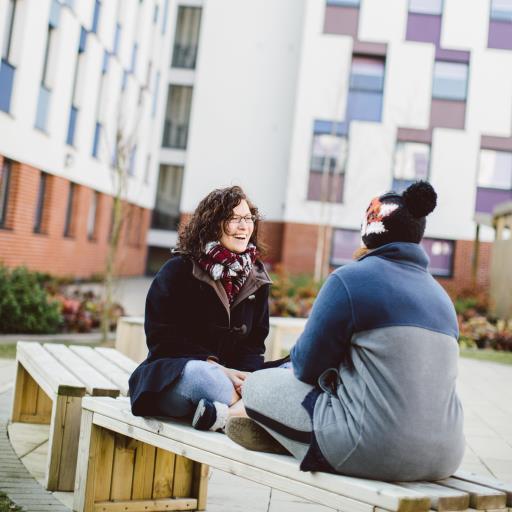Research
Our research is supported by state-of-the-art facilities in the School of Life Sciences. Recent investment has provided modern facilities for imaging biological systems, transcriptomics, proteomics and bioinformatics.
Research activities have been supported by a variety of sponsors: MRC, BBSRC, EPSRC, ESRC, EU, NHS, Wellcome Trust, Cancer Research UK, National Institute of Health, Heal Cancer Charity, Breast Cancer Campaign, Royal Society, EMF Biological Research Trust, GlaxoSmithKline, Heart Research UK.
Research themes
A wide range of multidisciplinary translational research is carried out by researchers and clinicians within the Essex Biomedical Sciences Centre. Our research focuses on three themes:
Wellbeing and healthy lifestyles
Exercise and health; childhood fitness and obesity; cardiac health; physical activity and the environment (green exercise)
Ageing
Interventions for age-related conditions and diseases; human-centred robotics for assisted livingDisease
Heart and vascular disease; infectious disease; cancer; autoimmune disease; developing artificial blood.
Research Projects
Biomarkers of breast cancer
Breast cancer is one of the most common diseases in the Western world. Great efforts to find the means to detect and monitor breast cancer have been made in recent years. One of the most promising developments involves identification of cancer biomarkers. Biomarkers are molecules that are associated with the disease: they can be measured in body fluids and tissues and serve as valuable indicators and tools for diagnosing cancer and monitoring the outcome of treatment.
We discovered that a protein called BORIS, which was found in blood cells of breast cancer patients, has a good potential to be an early biomarker of breast cancer and as a biomarker to monitor the efficacy of pre-operative chemotherapy. In collaboration with the clinicians we are evaluating these findings and hope to apply them in clinical practice in the future.
The presence of BORIS in blood cells from a breast cancer patient can be seen in the illustration – cells containing brown colour are cells with BORIS (indicated by arrows).
Identification and characterisation of factors promoting tumour growth and therapy resistance in prostate and breast cancer
Prostate and breast cancer are leading causes of cancer-related death in men and women respectively. The growth of prostate cancer is dependent upon the male sex hormone androgen, whereas the growth of breast cancer is usually dependent upon the female sex hormone oestrogen. For this reason, a common therapeutic strategy for the treatment of these diseases is hormone therapy, which aims to block the production and/or action of these hormones.
Hormone therapy is initially successful in the majority of patients, but relapse is a common problem and the tumours progress to the castrate or endocrine resistant stage of the disease. Chemotherapy is an option for hormone therapy resistant disease, but resistance is also commonly associated with these agents. We aim to identify and characterise factors that drive tumour growth and factors that promote therapy resistance. It is hoped that this research will identify much-needed novel therapeutic targets for these diseases and to identify biomarkers that will predict whether a patient will respond to a therapeutic.
Artificial blood: reducing the intrinsic toxicity of haemoglobin
Developing alternatives to blood transfusions would have important clinical benefits. Blood needs to be typed, cannot be guaranteed virus-free and has a short shelf life. The dream of a long-life, pathogen free blood supply has been a holy grail for biotechnology for over two decades.
However, previous blood substitutes have failed in clinical trials, due to the intrinsic toxicity of the haemoglobin molecules used. Under conditions of oxidative stress, haemoglobin forms a highly reactive oxidative species: a ferryl, Fe(IV,) iron. This will initiate lipid peroxidation with consequent production of toxic vasoconstrictor molecules and apoptotic precursors. We have shown that genetically modifying (adding/removing) specific tyrosine residues on haemoglobin allows us to control the reactivity of this ferryl haem. We are using in vitro and cell assays to demonstrate which class of mutants has the most favourable effect on the intrinsic toxicity of haemoglobin. This information will provide the technical proof of concept for the next generation of blood substitutes.
Using the Nintendo Wii to improve balance and quality-of-life in recurrent elderly fallers
The consequence of falling can be physically and psychologically debilitating even resulting in death. The cost of falls is approximately £5 million per annum in North Essex. For the UK, falls are reported to cost the NHS £1.7 billion. Researchers at Essex are undertaking an evaluation of the use of the Nintendo Wii-Fit™ as a potential adjunct to standard NHS falls training. This is a novel approach for balance rehabilitation for those elderly patients who are repeat fallers.
Anecdotally the Wii-Fit™ is being used in a number of settings within the NHS and veteran associations in the US but there is a paucity of evaluative research for the Wii-Fit™ as rehabilitation tool such as we are proposing. The Wii-Fit™ is already being used, in a limited fashion by the Colchester General Hospital's falls prevention exercise group and feedback from both patients and physiotherapy staff has been positive. The results from this study suggested that improvements were greater when using the Wii compared to traditional training. However, the Wii was only used for a small period of time within training.
We therefore plan to carry out a small random control trial comprising 60 patients, using pre and post-intervention measures (biomechanical, psychological and functional) to evaluate the utility of the Wii-Fit as a rehabilitation tool. Preliminary analysis of case studies suggest that the Wii combined with traditional training is more effective in improving functional and psychological outcomes compare to traditional only and traditional combined with extra one-on-one physiotherapy.
Essex Longitudinal Study of Gait and Ageing
The longitudinal changes of ageing upon gait and functional mobility are not understood. To address this we are starting a research project which utilise two data collection streams, 1) laboratory based and 2) community based. We will recruit participants who are 55 years of age and above and who are ambulatory and plan to monitor them once year for 10 years. The laboratory based study will evaluate gait and functional movement in three-dimensions using a multi-camera system of at least 100 participants. This will take place at the University of Essex biomechanics laboratory.
This will be the first in-depth analysis of ageing and gait. The community based study will involve the research team going into the community and collecting data (i.e. gait, balance, strength, measures). We hope to collect data for at least 1000 participants. It is hoped that this project will, a) provide normative data for gait/functional mobility and the ageing process, and, b) provide prospective data which may allow us to predict movement disorders and falls.


